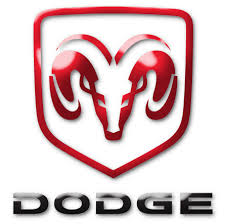RAM 1500 Truck 4WD V8-5.7L VIN D (2005)

Cruise Control Switch: Description and Operation
Two separate switch pods operate the speed control system. The steering-wheel-mounted switches use multiplexed circuits to provide inputs to the PCM
(to the ECM for diesel) for ON, OFF, RESUME, ACCELERATE, SET, DECEL and CANCEL modes.
The individual switches cannot be repaired. If one switch fails, the entire switch module must be replaced.
Depending on engine control computer (JTEC having a 3- plug connector or NGC having a 4- plug connector), 2 types of switches are used. Both types
of switches are internally and externally different. The switch used with the NGC system has an attached pigtail lead. The switch used with the JTEC
system does not have an attached pigtail lead.
When speed control is selected by depressing the ON, OFF switch, the PCM (ECM for diesel) allows a set speed to be stored in its RAM for speed
control. To store a set speed, depress the SET switch while the vehicle is moving at a speed between approximately 35 and 85 mph. In order for the
speed control to engage, the brakes cannot be applied, nor can the gear selector be indicating the transmission is in Park or Neutral.
The speed control can be disengaged manually by:
-
Stepping on the brake pedal
-
Depressing the OFF switch
-
Depressing the CANCEL switch.
The speed control can be disengaged also by any of the following conditions:
-
An indication of Park or Neutral (auto. trans.)
-
The VSS signal increases at a rate of 10 mph per second (indicates that the co-efficient of friction between the road surface and tires is extremely
low)
-
Depressing the clutch pedal (manual trans.).
-
Excessive engine rpm (indicates that the transmission may be in a low gear)
-
The VSS signal decreases at a rate of 10 mph per second (indicates that the vehicle may have decelerated at an extremely high rate)
-
If the actual speed is not within 20 mph of the set speed The previous disengagement conditions are programmed for added safety.
Once the speed control has been disengaged, depressing the ACCEL switch restores the vehicle to the target speed that was stored in the PCM's RAM
(ECM for diesel).
NOTE: Depressing the OFF switch will erase the set speed stored in the PCM's/ECM's RAM.
If, while the speed control is engaged, the driver wishes to increase vehicle speed, the PCM (ECM for diesel) is programmed for an acceleration feature.
With the ACCEL switch held closed, the vehicle accelerates slowly to the desired speed. The new target speed is stored in the PCM's/ECM's RAM when
the ACCEL switch is released. The PCM/ECM also has a "tap-up" feature in which vehicle speed increases at a rate of approximately 2 mph for each
momentary switch activation of the ACCEL switch.
The PCM/ECM also provides a means to decelerate without disengaging speed control. To decelerate from an existing recorded target speed, depress
and hold the COAST switch until the desired speed is reached. Then release the switch. The ON, OFF switch operates two components: the
PCM's/ECM's ON, OFF input, and the battery voltage to the brake switch.
